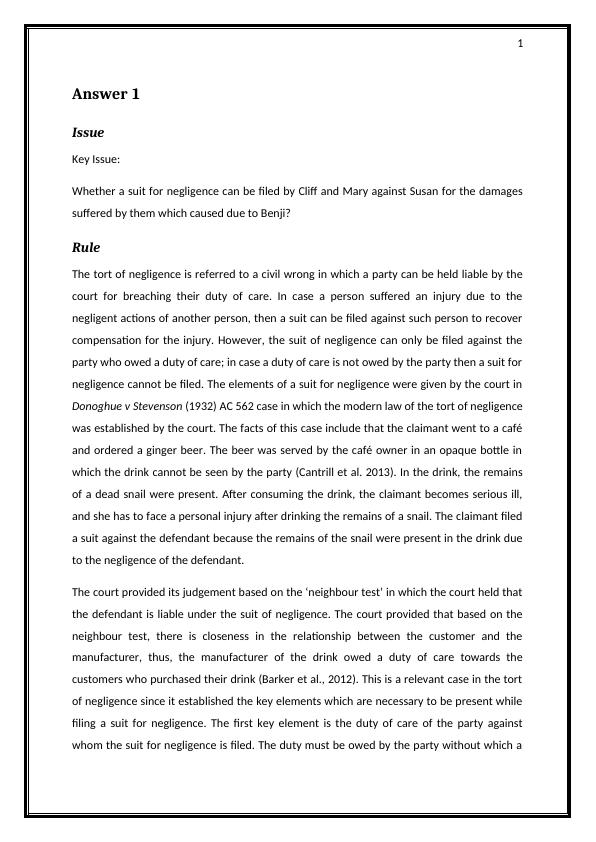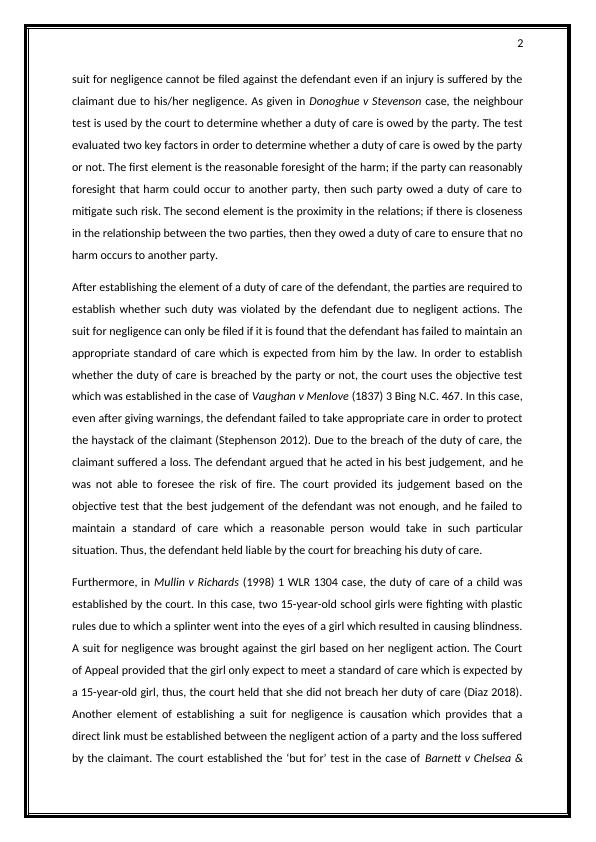Can Cliff and Mary sue Susan for negligence?
7 Pages2387 Words124 Views
Added on 2023-06-07
About This Document
This article discusses the elements of a suit for negligence and applies them to a case study involving Cliff and Mary, who suffered damages caused by Susan's Bengal tiger, Benji. The article concludes that Susan did not breach her duty of care and is not liable for the damages suffered by Cliff and Mary.
Can Cliff and Mary sue Susan for negligence?
Added on 2023-06-07
ShareRelated Documents
End of preview
Want to access all the pages? Upload your documents or become a member.
Role of Foresight in the Neighbour Principle in Modern Negligence Law
|10
|3885
|439
Analysis of Negligence Liability in the Case of Cliff and Mary vs Susan
|7
|2264
|195
Can Cliff and Mary recover their damages by filing a suit of negligence against Susan?
|6
|2283
|397
Negligence Tort: Elements and Defences
|7
|2349
|267
Can Susan be held liable for the loss suffered by Cliff and Mary?
|7
|2289
|116
Liability for Negligence in Case of Pet Owners
|8
|2445
|475



